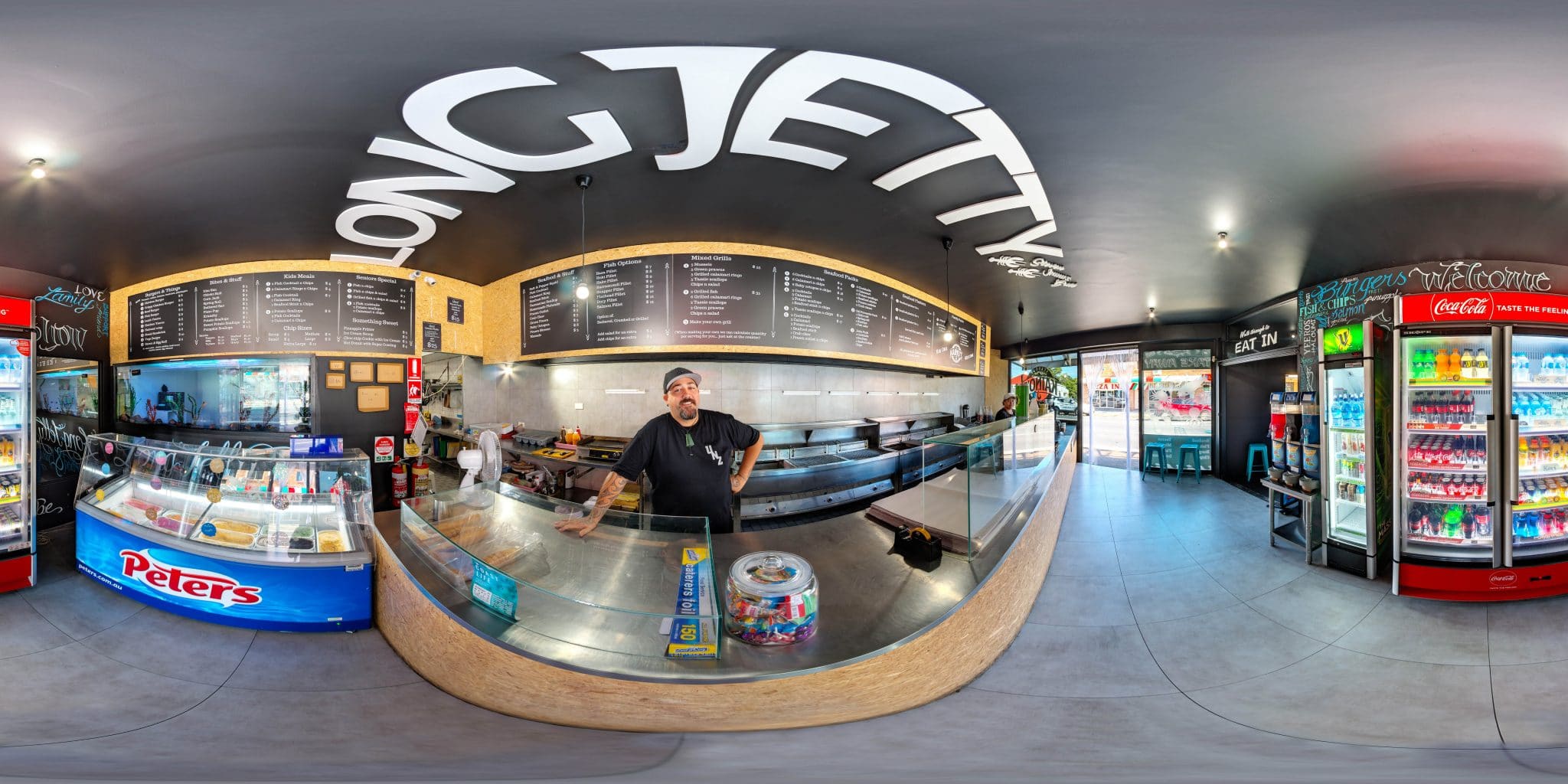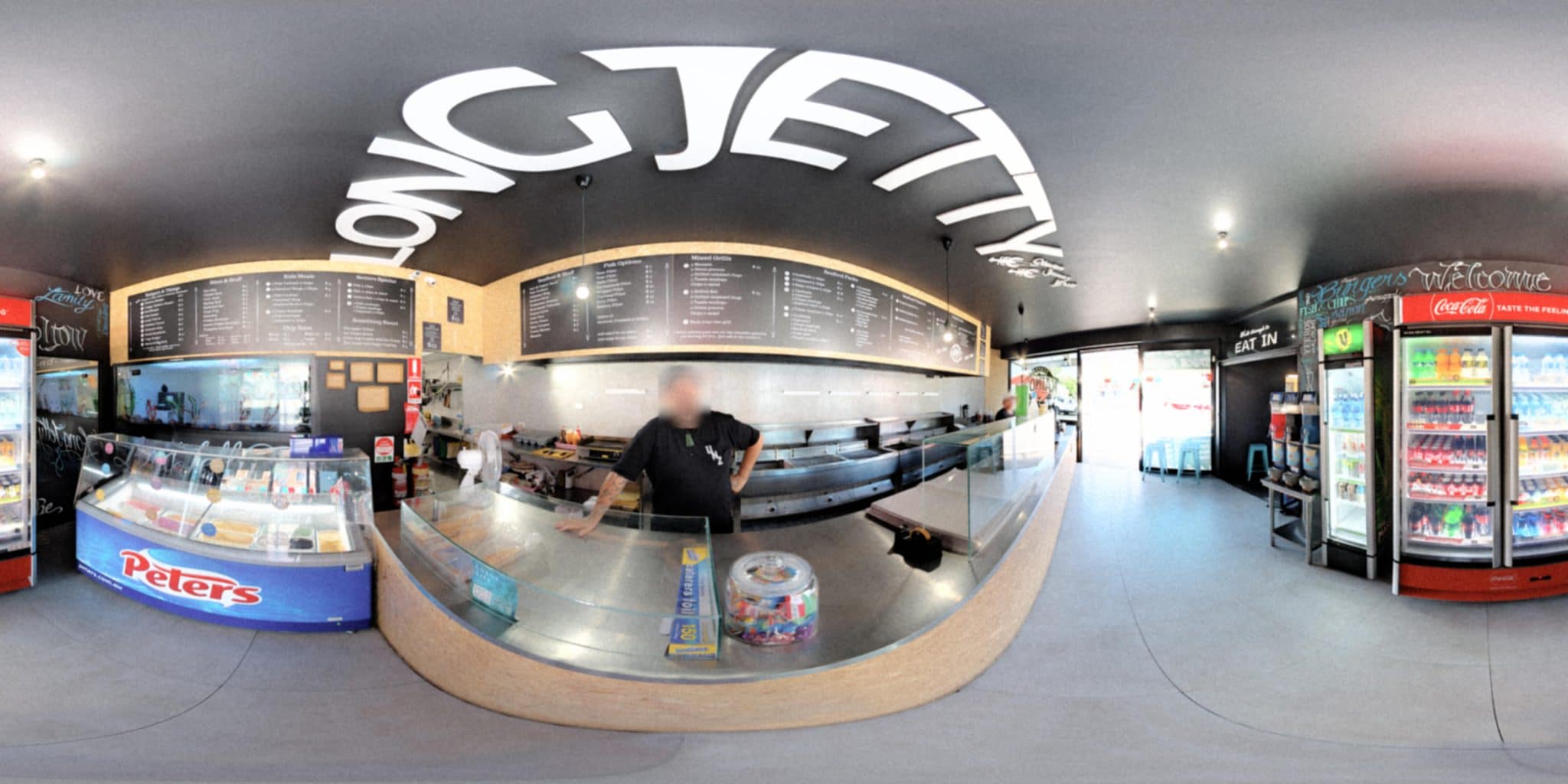Work Pics 360 vs Other Google Trusted Photographers
↑↑ Move the slider above to compare the image quality and face blurring ↑↑
Better Quality and People Not Blurred
I often get asked: what’s the difference I bring to virtual tour photography as a Google Street View Trusted Photographer?
At first glance, if two images are shot the same way with similar equipment, you’d expect the same results. But that’s not always true.
About the Compare Slider Above
The slider above shows a typical image taken by most “One Shot” 360 cameras (like the Ricoh Theta V or MiSphere 360)—the kind many Google Trusted photographers use for virtual tours. I’ve compared this to what a virtual tour image can look like when done to a higher standard.
For simplicity, I’ve kept the samples as flat (not 360°) images and resized them to 23.8 megapixels so they load fast. This sample was shot recently at Kaino’s Seafood and Burgers in Long Jetty.
Work Pics 360 standard: 75 Megapixels (this is the same image as above, published live on Google Street View)
Face Blurring? Why Do I Show Faces?
With Work Pics 360, you’ll often see people in the images—with their faces visible and not blurred. Surprised? It’s a bit unusual. That’s because Google used to require faces to be blurred on Street View for privacy. Privacy remains vitally important, but for business photography, seeing happy, authentic people is a real advantage.
How do I do it? I simply get permission from those who appear in the tour, using a model release so it’s clear their likeness will be shown. Of course, not everyone will want to appear, and that’s completely fine. But if willing, it adds real likeability and authenticity to your business images.
Quality Takes Skill and Effort
Including people in 360° photos is much harder than with standard photography. In every single shoot, I deal with huge light variations—especially when indoor and outdoor spaces are visible at once. That’s why I use something called HDR (high dynamic range) blending: multiple images are shot and combined to capture both shadows and highlights, so the final image looks like what your eye would truly see.
HDR isn’t easy with people, because anyone moving can look ghosted or blurry. My workflow solves this, allowing people to appear naturally in your virtual tour images.
Quality 360° Photos Influence Perception and Conversions
If you’re considering a virtual tour and want your team, staff, or happy clients featured (with their approval, of course), ask your photographer if their images will show people without blurring. Don’t let poor quality give people the wrong impression.
Ask about their quality standards and to see their portfolio. Happy, authentic people interacting with your business always leads to better perception—and better conversions.

